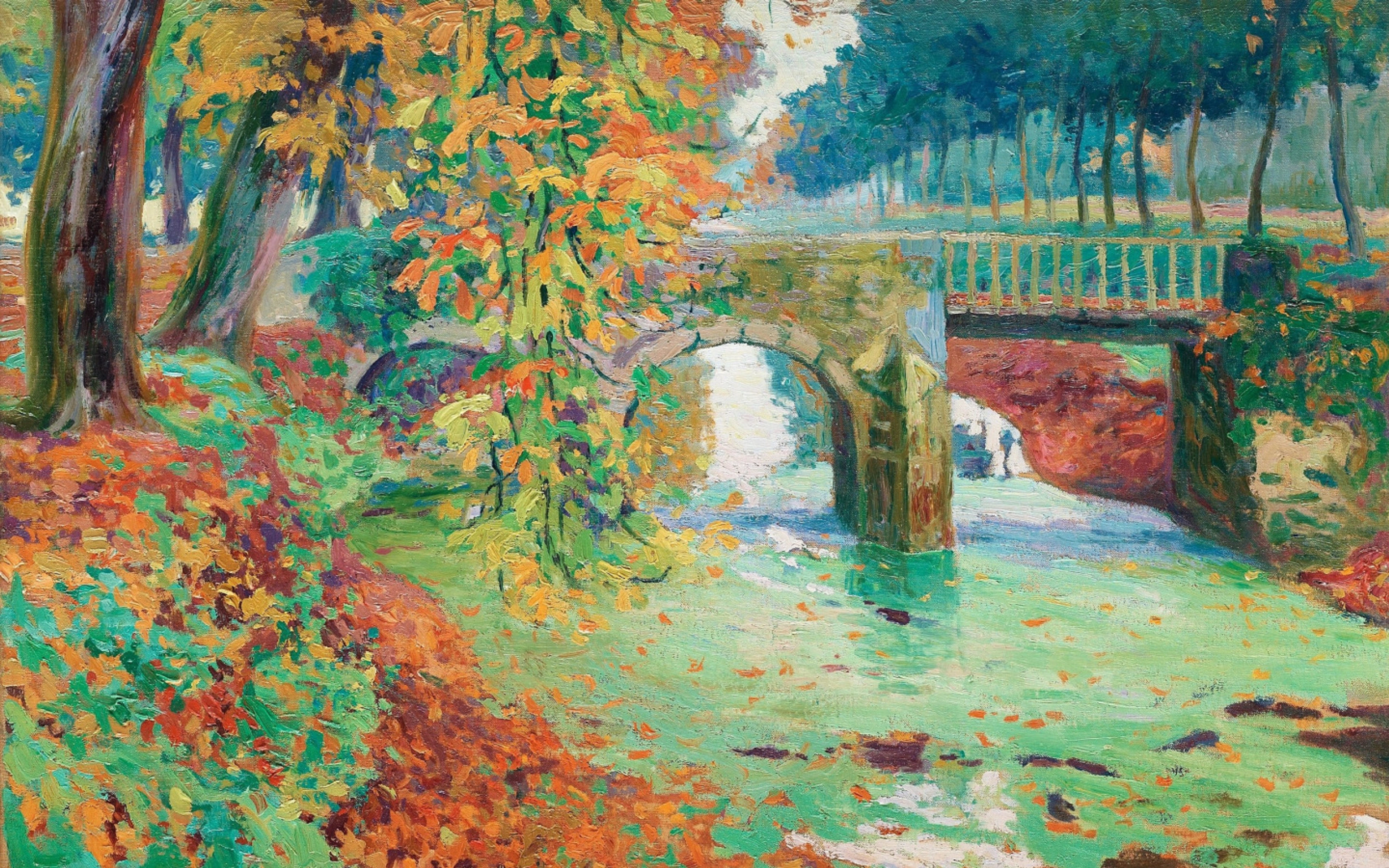
Art as Therapy at Home: Simple Exercises for Well-being (No Skill Required!)
Unlock the power of art as therapy at home! Discover simple, no-skill-required exercises to process emotions, relieve stress, boost creativity, and connect with yourself. Includes personal insights, historical context, practical tips, and the science behind it.
Art as Therapy at Home: Simple Exercises for Well-being (No Skill Required!)
Hey there. Let's talk about something a little different today – something that's been a quiet anchor for me, especially when the world feels a bit... much. I'm talking about art as therapy. Forget fancy studios or needing to be the next Picasso. This is about using simple creative acts to connect with yourself, process feelings, and just breathe. It's a tool you already have access to, right in your home.
I've always found solace in making things. Sometimes it's the big, complex pieces you see in my shop section, but often, it's just a messy scribble or a splash of color that helps clear my head. I remember one particularly frustrating week, I just grabbed the cheapest crayons I had and furiously scribbled until the paper tore slightly. It wasn't pretty – it was a dense, chaotic knot of black lines – but man, did it feel good to get that energy out. It wasn't about making art for a gallery; it was about making mental space.
Life throws curveballs, right? And sometimes words just aren't enough. That's where art comes in. It's a different language, one that speaks directly to your gut and your heart. It allows you to externalize those swirling, hard-to-name feelings, giving them form and making them less overwhelming. It's a way to engage your hands and your senses, pulling you out of your head and into the present moment. Engaging in these tactile, sensory activities can even tap into different parts of your brain, offering a unique pathway for processing that verbal communication sometimes can't reach. It's like giving your mind a different kind of puzzle to solve, one that uses color, texture, and form instead of logic and language. We'll touch more on the science behind this later.
But wait, before we dive into the fun stuff, there's a common question that pops up...
Art Therapy vs. Art as Therapy: What's the Difference?
You might have heard the term "art therapy." This is a specific clinical practice led by a trained, certified art therapist. It involves therapeutic techniques within a professional relationship to address mental and emotional health issues.
What we're exploring here is "art as therapy." This is the self-guided, informal use of creative expression for personal well-being, stress relief, and emotional processing. It's something anyone can do, anywhere, without needing a therapist or formal training. Think of it like seeing a nutritionist for general healthy eating habits versus seeing a doctor for a specific medical condition. Art as therapy is the healthy eating – a tool for self-care and exploration, not a substitute for professional help if you need it. Understanding this distinction is key to managing your expectations – you're not aiming for clinical outcomes, but rather personal exploration and relief through creative means.
A Timeless Practice? The Roots of Creative Well-being
Using creative expression for healing and understanding isn't a new concept invented in a modern therapy room. Humans have instinctively turned to making things to process their world for millennia. Think about ancient cave paintings, intricate mandalas created for meditation, the rhythmic weaving of textiles, or the raw, emotional power of folk art traditions. Consider the storytelling embedded in Indigenous art, used not just to depict history but to maintain cultural and emotional continuity. Or the detailed illustrations in medieval manuscripts, often a form of meditative devotion. Even something like the precise, meditative strokes of Japanese calligraphy can be a form of art as therapy. These weren't always 'art' in the formal sense, but they were powerful acts of externalizing inner states, connecting with something larger, or simply finding a way to cope. Even something as seemingly simple as the repetitive, almost trance-like process of creating traditional patterns in pottery or basketry across various cultures served a grounding, meditative purpose. Art as therapy taps into this deep, innate human need to create and express, linking us to a timeless practice of finding solace and meaning through our hands and imagination. It's like our ancestors knew, deep down, that sometimes you just need to make a mess to feel better, even if they called it something else.
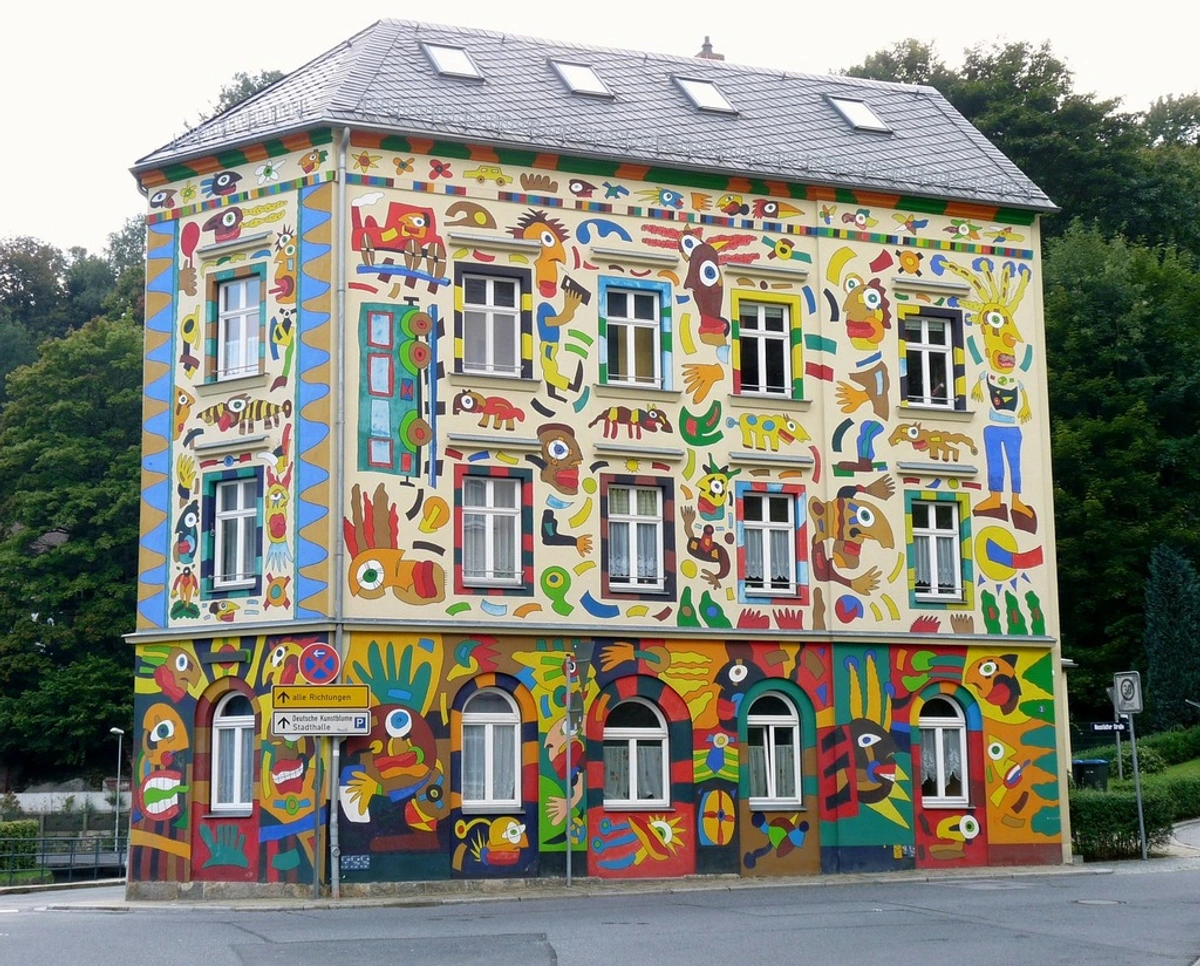
Why Bother with Art as Therapy at Home?
So, why would you carve out time for this messy, non-judgmental play? Maybe you're feeling stressed, anxious, or just... blah. Maybe you're navigating something tough, or maybe you just need a break from screens and noise. Engaging in art as therapy, even the DIY kind you do on your kitchen table, offers a bunch of benefits. Why give it a shot?
- Stress & Anxiety Relief: The act of creating is inherently calming for many people. It pulls you into the present moment, acting as a form of active meditation. Focusing on the simple actions – the drag of a pencil, the swirl of paint – can quiet a racing mind. I've found that even five minutes of focused mark-making can interrupt a spiral of anxious thoughts, like hitting a mental reset button. It's a tangible way to channel restless energy.
- Emotional Processing: It gives form to feelings that are hard to name or talk about. You can literally paint your anger red and jagged, or sculpt your sadness into a heavy, slumped shape. Seeing your emotions outside of yourself can provide distance and clarity. I once did an emotional color map when I was feeling a confusing mix of sadness and hope, and the map ended up being patches of deep blues and greys next to surprising bursts of bright yellow and green. It helped me see that both feelings were present and valid, visually laid out.
- Self-Discovery: You might uncover things about yourself you didn't realize, seeing patterns or emotions emerge on the page or in the clay. It's like a visual journal of your inner world, sometimes revealing insights you couldn't access through words alone. It can be surprising what your hands create when your mind is quiet.
- Mindfulness & Presence: Focusing on textures, colors, and movements is a powerful way to practice mindfulness. It anchors you in the 'now'. The simple feel of clay in my hands can instantly pull me out of my head and into the physical reality of the moment. It's a sensory escape from overthinking.
- Non-Verbal Communication: Sometimes, showing someone a piece you made that represents how you feel can be easier and more effective than trying to explain it with words. It opens up a different channel for connection, both with yourself and others.
- Sensory Grounding: Engaging your senses through touch, sight, and even smell (of materials) can be incredibly grounding, especially when you feel overwhelmed or disconnected. The tactile experience of clay or the smell of paint can anchor you firmly in the present.
- Boosts Creativity & Focus: Engaging in these simple acts can unlock creative pathways you might not even know you had, which can spill over into other areas of your life. The focused nature of many exercises can also improve concentration. It's like exercising a different part of your brain.
- Accessibility: You don't need expensive supplies or a dedicated space. A pencil and paper are enough to start. It's a low-barrier way to engage in self-care, available whenever you need it.
- Cultivating Patience & Acceptance: The creative process, especially when working with materials that have a mind of their own (like wet paint or stubborn clay), can teach you to be patient with yourself and the process. It's a safe space to practice letting go of control and accepting imperfections, which is a pretty useful skill for navigating life, wouldn't you agree? It's okay if it's not perfect.
- Physical Release: Beyond the mental benefits, the physical act of making – squeezing clay, scribbling vigorously, tearing paper – can be a great way to release physical tension. Just remember to pay attention to your posture and take breaks, especially during longer sessions. Your body holds onto stress too!
- Complements Other Self-Care: Art as therapy pairs beautifully with other well-being practices. Try listening to a calming podcast while you draw, doing some mindful breathing exercises before you start, or using your art session as a visual warm-up before journaling about your day. It's not an isolated activity.
The Science Behind the Scribble (Briefly)
Okay, so it feels good, but is there anything more to it? While art as therapy isn't clinical, there's a growing understanding of why creative activities feel good and can be beneficial. Engaging in art can:
- Reduce Stress Hormones: Studies have shown that making art can lower cortisol levels, the body's primary stress hormone. It literally helps calm your system down.
- Activate Reward Pathways: The creative process can activate the brain's reward system, releasing dopamine and other feel-good chemicals.
- Engage Different Brain Areas: Art engages both the logical, analytical left brain and the creative, emotional right brain, fostering new connections and processing pathways. The non-verbal, intuitive nature of art can access and process emotions and experiences in ways that purely verbal or logical thinking might not, offering a different route to understanding and relief.
- Improve Emotional Regulation: By externalizing emotions, you can gain perspective and develop better coping mechanisms.
It's not magic, but a powerful, accessible tool tapping into our innate human capacity for creativity and expression. It's a way to give your brain a different kind of workout, one that feels less like a chore and more like... well, like playing with crayons.
Getting Started: Your Home 'Studio' (aka, Any Flat Surface)
So, you're ready to give it a shot? Awesome. Don't overthink the setup. Your 'studio' can be a corner of your living room, a spot at the kitchen table, or even just a clipboard on your lap. The key is to have a few basic supplies handy. You probably have some already! And hey, watch out for rogue crumbs or stray pet hairs on your masterpiece – it just adds character, right? I once found a cat whisker perfectly embedded in a layer of paint; I decided it was a collaboration. Embrace the messiness; it's part of the process.
Basic Supplies:
- Paper (any kind! Printer paper, sketchbook, even junk mail envelopes)
- Pencils, pens, markers, crayons, colored pencils
- Maybe some cheap paint (acrylics or watercolors are easy) and brushes – no need for artist-grade stuff here!
- Optional: Scissors, glue, old magazines for collage, natural materials (leaves, stones, twigs, dirt), playdough or simple salt dough.
- Digital tools: Don't have physical supplies? A tablet with a drawing app, or even just a simple paint program on your computer, can work too! The sensory experience is different, but the act of making marks and shapes is still powerful.
Think about the sensory experience of these materials too – the smooth glide of a pencil, the resistance of a crayon, the wet flow of paint, the earthy feel of clay, the distinct smell of markers. Different materials can even lend themselves to expressing different emotions – sharp pencils for tension, soft pastels for calm, messy paint for chaos. Just gather what you have and make a little space. A quick note on safety: most basic art supplies like crayons, colored pencils, and standard acrylics are non-toxic, but if you're using anything stronger or working in a small space, ensure you have good ventilation. If you have kids or pets around, double-check that your chosen materials are safe for them too.

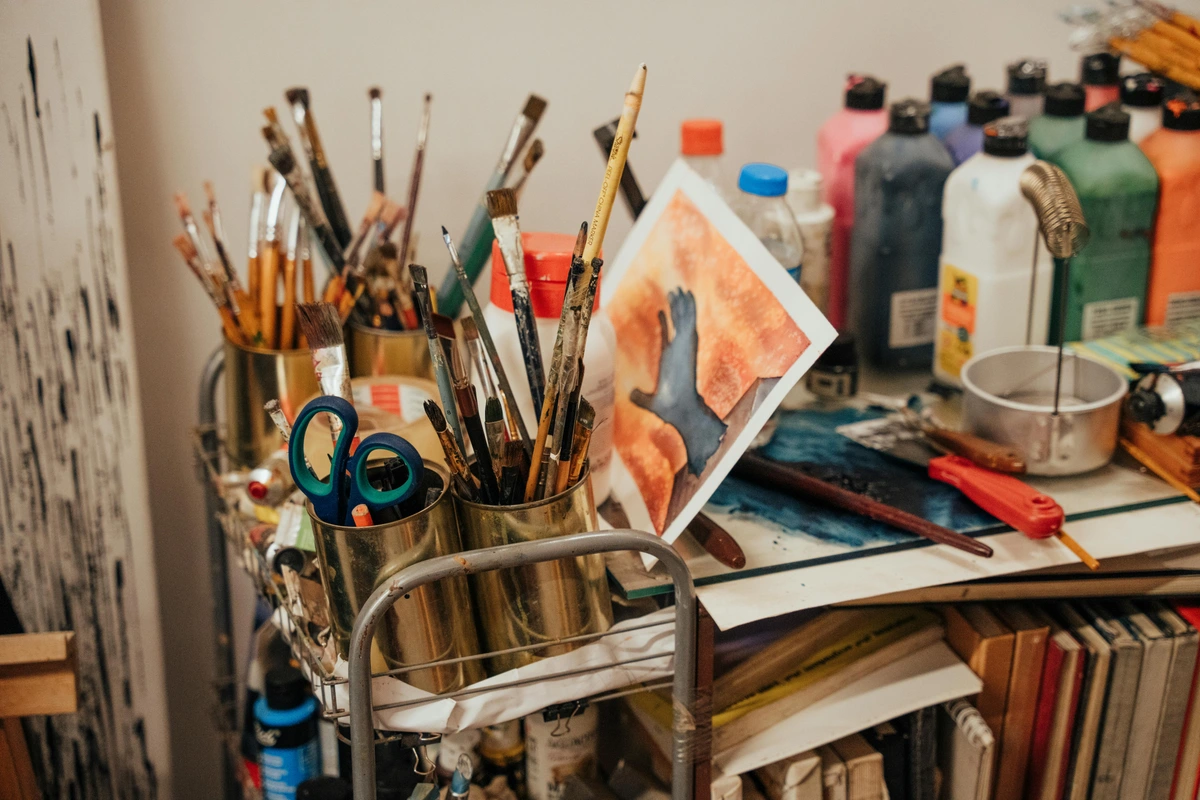
Setting the Scene & Intention
Before you start an exercise, you might find it helpful to set a simple intention. This isn't about having a goal for the art itself, but rather for your experience. It could be something like:
- "I want to explore this feeling of restlessness."
- "I want to release some tension."
- "I just want to relax and be present."
- "I'm curious to see what emerges."
You don't have to do this, but sometimes giving your session a gentle focus can make the process feel more grounded and meaningful. Or, you can just dive in and see what comes up! This intention can then guide your material choices or the energy you bring to the exercise.
It can also help to create a conducive environment. Maybe put on some calming music (or energetic, depending on your mood!), light a candle (safely, of course!), or just clear a small space free from distractions. Even five minutes of dedicated, focused time can make a difference.
Quick Tips for Beginners
Feeling a little hesitant? That's totally normal! Here are a few quick things to keep in mind as you start:
- Start Small: You don't need hours. Even 5-10 minutes is enough to dip your toes in.
- Process Over Product: Seriously, let go of what it looks like. The value is in the doing.
- Any Materials Work: Don't feel you need fancy supplies. A pen and paper are perfect.
- There's No Right or Wrong: Your art is for you. There are no rules, no grades, no judgment.
- Be Gentle with Yourself: If it feels awkward or frustrating at first, that's okay. Just keep going, or try a different exercise.
Remember: It's About the Process, Not the Product
I can't stress this enough. The point of these exercises isn't to create a masterpiece for a gallery or to worry about composition. It's purely for you. There's no judgment here. Your scribbles don't need to look like anything. Your color map doesn't need to make sense to anyone else. Your collage can be messy and chaotic.
Think of it like journaling, but with colors and shapes instead of words. Sometimes the most revealing pieces are the ones you'd never show anyone. And that's perfectly okay. Embrace the imperfection. The value is in the doing, the feeling, the releasing. Let go of expectations and just see what happens.
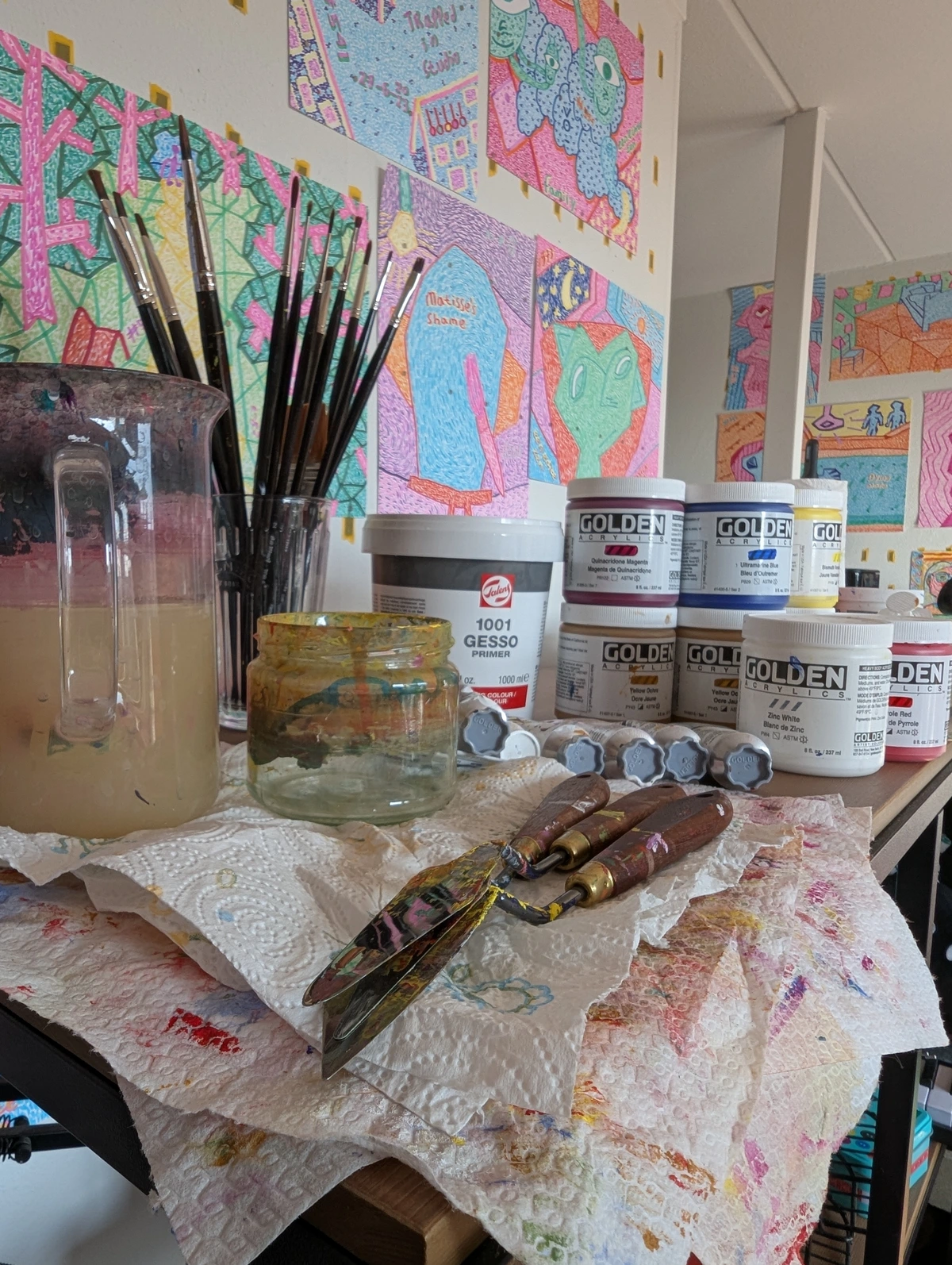
Simple Art as Therapy Exercises to Try Right Now
Ready to dive in? Awesome! Here are a few easy exercises to get you started. Remember the 'process over product' mindset we just talked about. The goal is expression and exploration, not perfection. Setting an intention beforehand and creating a calm space can add another layer to these practices. Choose what resonates with you in the moment – you don't have to do them all! As you work, try to pay attention not just to what you're making, but how your body feels – are your shoulders tense? Is your breathing shallow? Let the art help you connect with these physical sensations too. You might even consider having a journal or notebook nearby to jot down any thoughts, feelings, or insights that arise during or after the exercise.
Choosing an Exercise Based on Your Mood:
Not sure where to start? Think about how you're feeling right now:
- Feeling restless, angry, or overwhelmed? Try the Mindless Scribble or Sculpt Your Stress.
- Feeling confused or trying to understand complex emotions? Emotional Color Mapping or Collage Your Inner World might help.
- Need to feel grounded and present? Mindful Mark Making, Art with Natural Materials, or Sensory Exploration are great choices.
- Want to silence your inner critic or just play? Blind Contour Drawing is perfect.
- Looking to cultivate a positive feeling? Creating a Visual Safe Space or Drawing Your Ideal Day can help.
Warm-up: Shake it Out & Doodle
Before you start, take a moment to loosen up. Shake your hands, roll your shoulders. Close your eyes and take a few deep breaths. When you're ready, grab a piece of scrap paper and a pen or pencil. Just doodle whatever comes to mind for a minute or two. Simple shapes, lines, swirls. This isn't part of the main exercise, just a way to get your hand moving and your mind shifting gears.
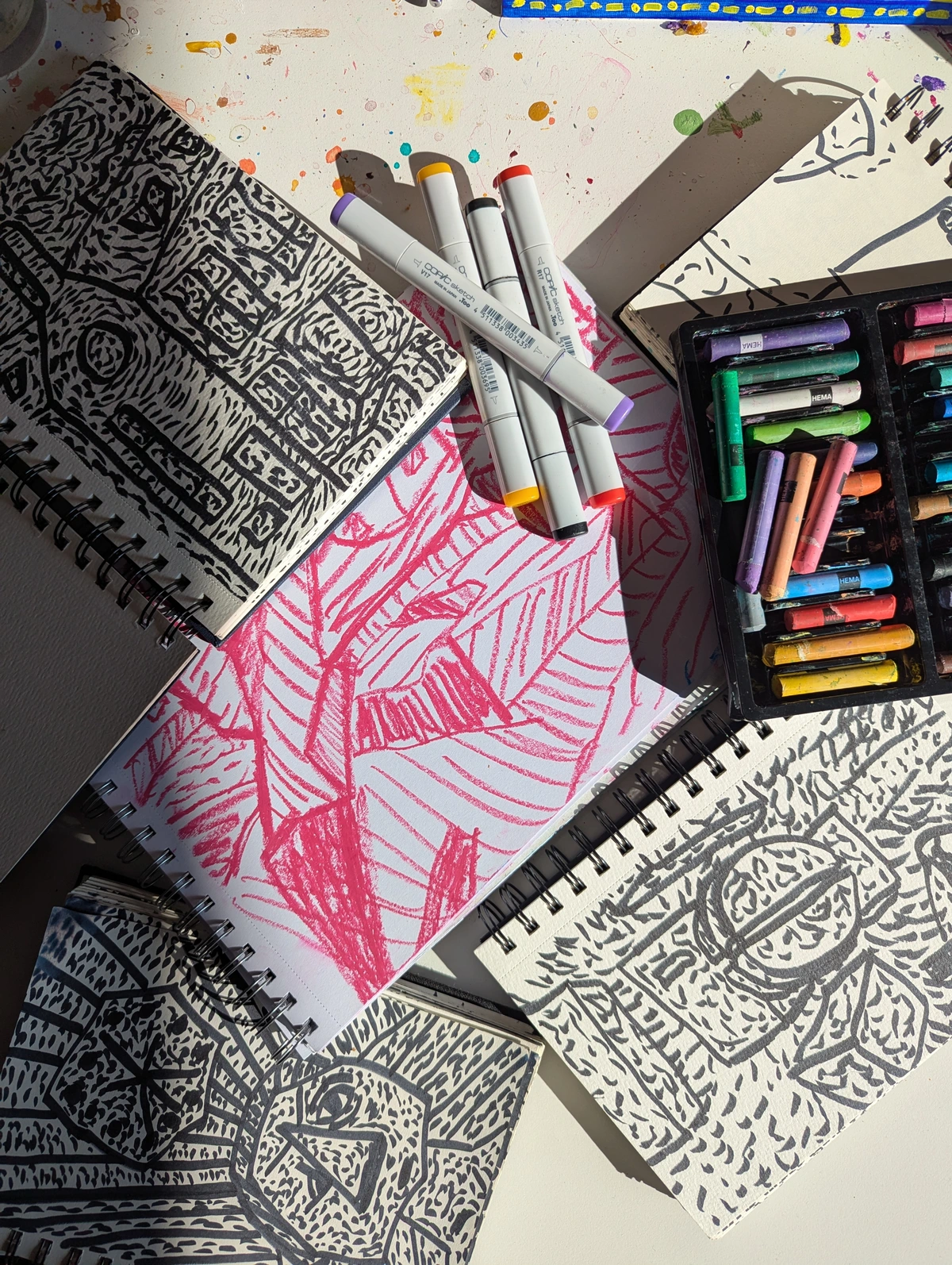
1. The Mindless Scribble (Release Energy)
This is my go-to for releasing pent-up energy or when my mind is racing. Grab a pen or pencil and just start making lines on the paper without thinking. Let your hand move freely. Scribble fast, scribble slow, make tight loops or wild gestures. Don't lift your pen. Fill the page. The goal here is pure, uninhibited release.
Once the page is full, take a step back. Look at the lines. Do you see any shapes or figures within the scribble? You can outline them or color them in if you like. Reflect on how you felt while scribbling (Was it frantic? Calm? Angry?) and what you see now. Does the visual chaos reflect your internal state? What kind of energy does the scribble feel like? Just notice, without judgment. What surprised you about the marks you made?
2. Emotional Color Mapping (Process Feelings)
Colors have a powerful connection to our emotions. Think about how you feel right now. What color does that feeling feel like? Is your stress a jagged red? Is your calm a soft blue? Grab your colors (paints, markers, crayons - whatever you have) and fill a page or sections of a page with the colors that represent your current emotional landscape. You can also think about textures or types of marks for different feelings – maybe anxiety is sharp, broken lines in grey, while hope is soft, blended yellows.
Don't worry about making a picture. Just focus on the colors and marks and how they feel as you apply them. You can blend them, layer them, or keep them separate. This is a great way to visually acknowledge and process complex feelings like anxiety, sadness, or even joy. Reflect on the colors and marks you chose, how you applied them (gentle strokes? harsh jabs?), and how the finished map feels to look at. Which color/texture feels most dominant right now, and what does that suggest? What feeling is strongest here? Just notice, without judgment.
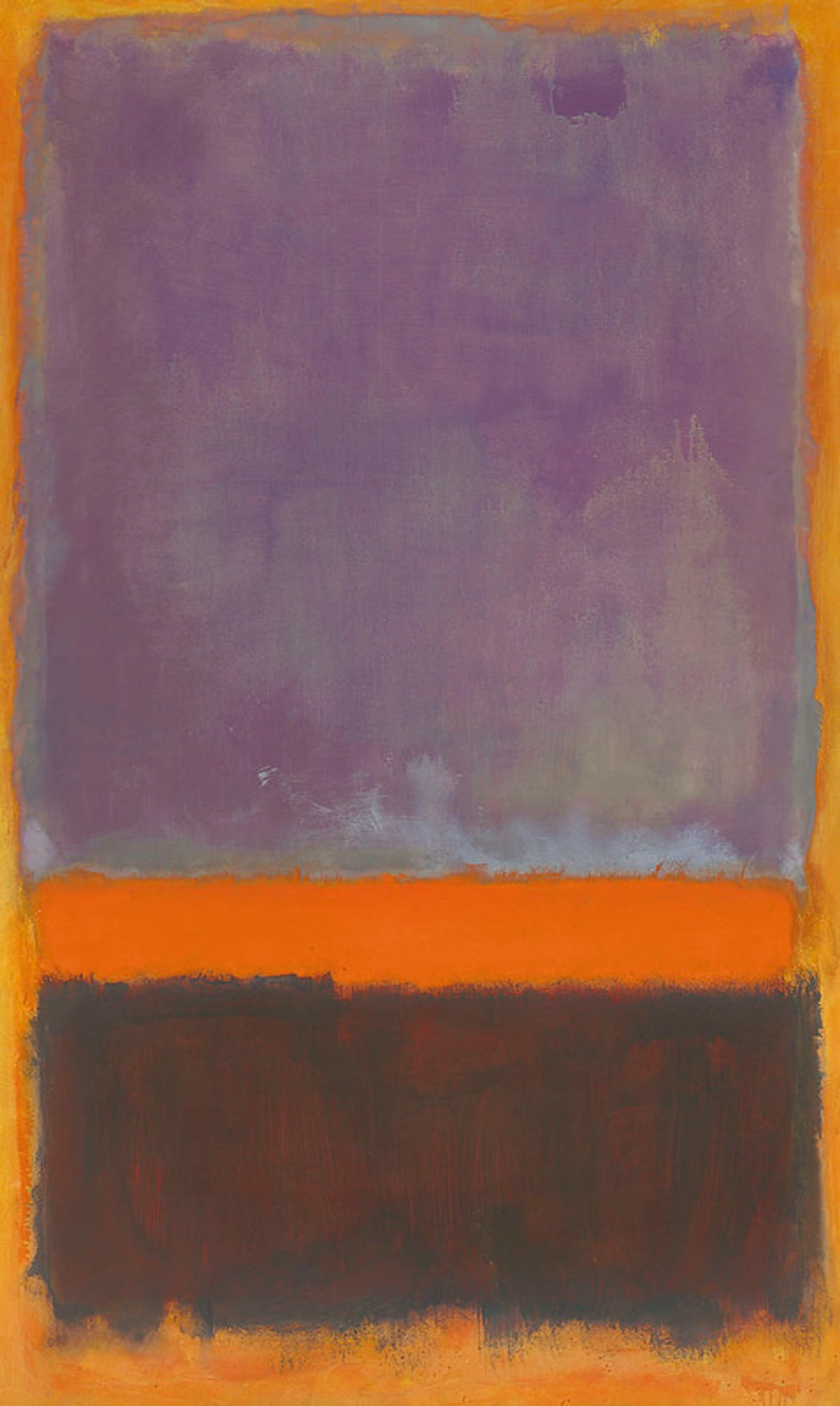
3. Collage Your Inner World (Visual Storytelling)
Gather some old magazines, newspapers, or even just scraps of colored paper. Without overthinking, tear or cut out images, words, or colors that you're drawn to. They don't have to make logical sense. Just pick what resonates. You could also incorporate textures like fabric scraps, sandpaper, or foil.
Arrange these pieces on a piece of paper and glue them down to create a collage. This is like building a visual poem about how you feel or what's on your mind. It's surprising what themes or messages emerge when you let your intuition guide you. Reflect on the images, words, and textures you chose. What story do they tell together? What feelings do they evoke? What was it like to physically tear and arrange the pieces? What did you learn about yourself through this process? Just notice, without judgment.
4. Mindful Mark Making (Presence & Focus)
This is about the act of creating, not the outcome. Grab a pen, pencil, or brush and some paper. Focus entirely on the sensation of making marks. Pay attention to the pressure of the tool, the sound it makes, the texture of the paper, the movement of your hand. You can also incorporate sounds you hear around you, or even sounds you make (like humming or tapping), letting them influence your marks.
Make simple marks – dots, lines, circles, swirls. Repeat them. Vary them. Don't try to draw anything specific. Just be present with the process of mark making. It's incredibly grounding. Reflect on the physical sensations and your state of mind during the exercise. Did your breathing change? Did your thoughts slow down? How did the simple repetition feel? How did incorporating sound affect your marks? Just notice, without judgment.
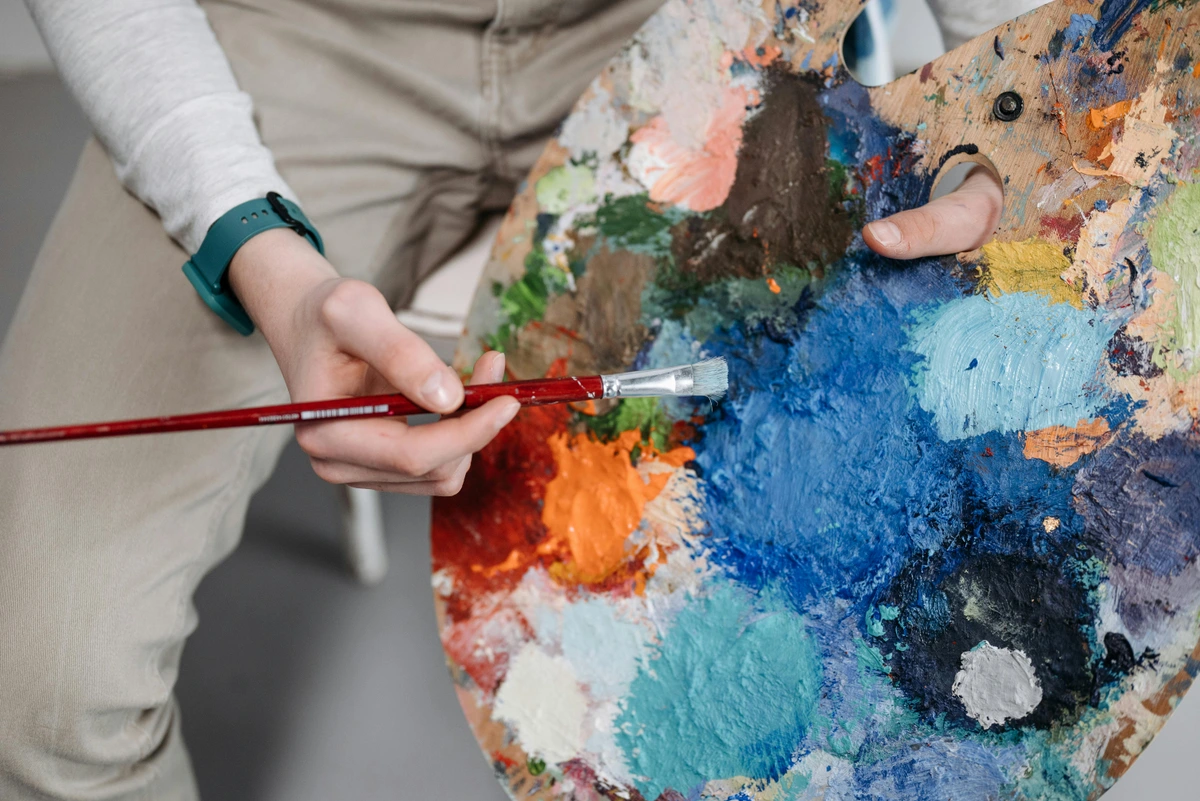
5. Sculpt Your Stress (or Joy!) (Tactile Processing)
If you have any clay, playdough, or even just aluminum foil, try sculpting. You can also use simple materials like bread dough, salt dough (flour, salt, water), or even just wadded-up paper or fabric scraps. Close your eyes for a moment and think about a feeling you want to explore. Then, without looking, start shaping the material in your hands. Let the feeling guide your fingers – squeeze, pound, smooth, twist. Pay attention to the physical sensation in your hands and body.
Open your eyes when you feel ready. What did you create? How does the shape feel in your hands? This tactile experience can be very powerful for processing emotions like frustration, tension, or even excitement. Reflect on the shape, texture, and weight of your creation. Does it embody the feeling you started with? How did the physical act of shaping feel in your body? Just notice, without judgment.
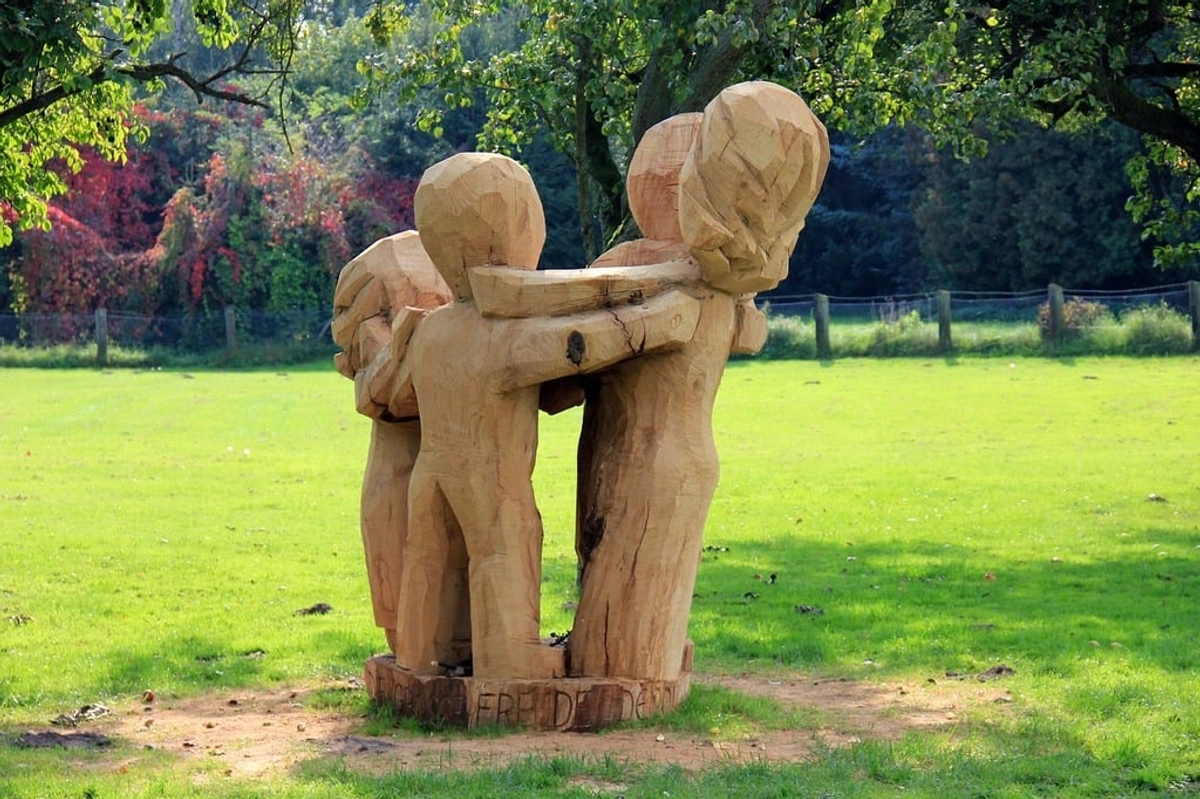
6. Drawing to Music (Emotional Response)
Choose a piece of music that matches your current mood, or perhaps the mood you want to feel. Try instrumental music to focus purely on sound and rhythm, or music with lyrics if you want to engage with words and narrative. Grab paper and colors. Listen to the music and let your hand move freely on the page in response. Don't try to draw anything specific, just let the rhythm, tempo, and feeling of the music guide your marks, lines, and colors.
Try this with different types of music – something fast and energetic, something slow and calming, something melancholic. Notice how the music influences your movements and the resulting art. Reflect on how the different music pieces influenced your art and your feelings. Did the fast music lead to quick, sharp lines? Did the slow music create flowing, blended colors? How did the combination of sound and visual creation feel? Just notice, without judgment. Sometimes, I find the music helps me access emotions I didn't even realize were there until they appeared on the page.
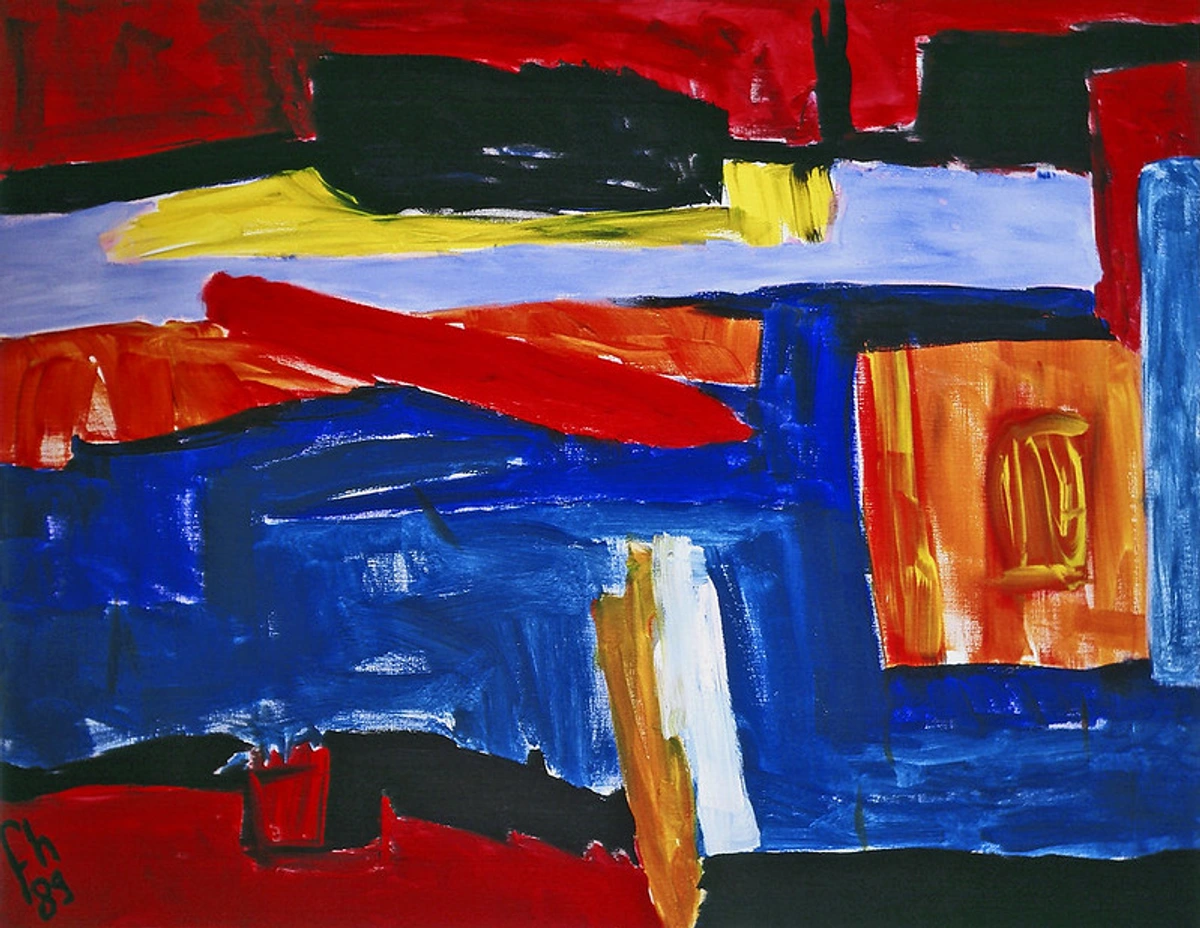
7. Creating a Visual Safe Space (Cultivating Calm)
Sometimes you just need a place to retreat, even if it's just on paper. Grab your materials and create a visual representation of a safe, calm, or peaceful place. This could be abstract or representational – a serene landscape, a cozy room, a swirling pattern of calming colors. Focus on the colors, shapes, and textures that evoke feelings of security and peace for you. You could even add symbolic elements that represent protection or comfort.
Reflect on the process. What materials felt most soothing? What colors brought the most calm? How does looking at your finished safe space make you feel? What elements in your visual space feel most protective or calming? Just notice, without judgment.
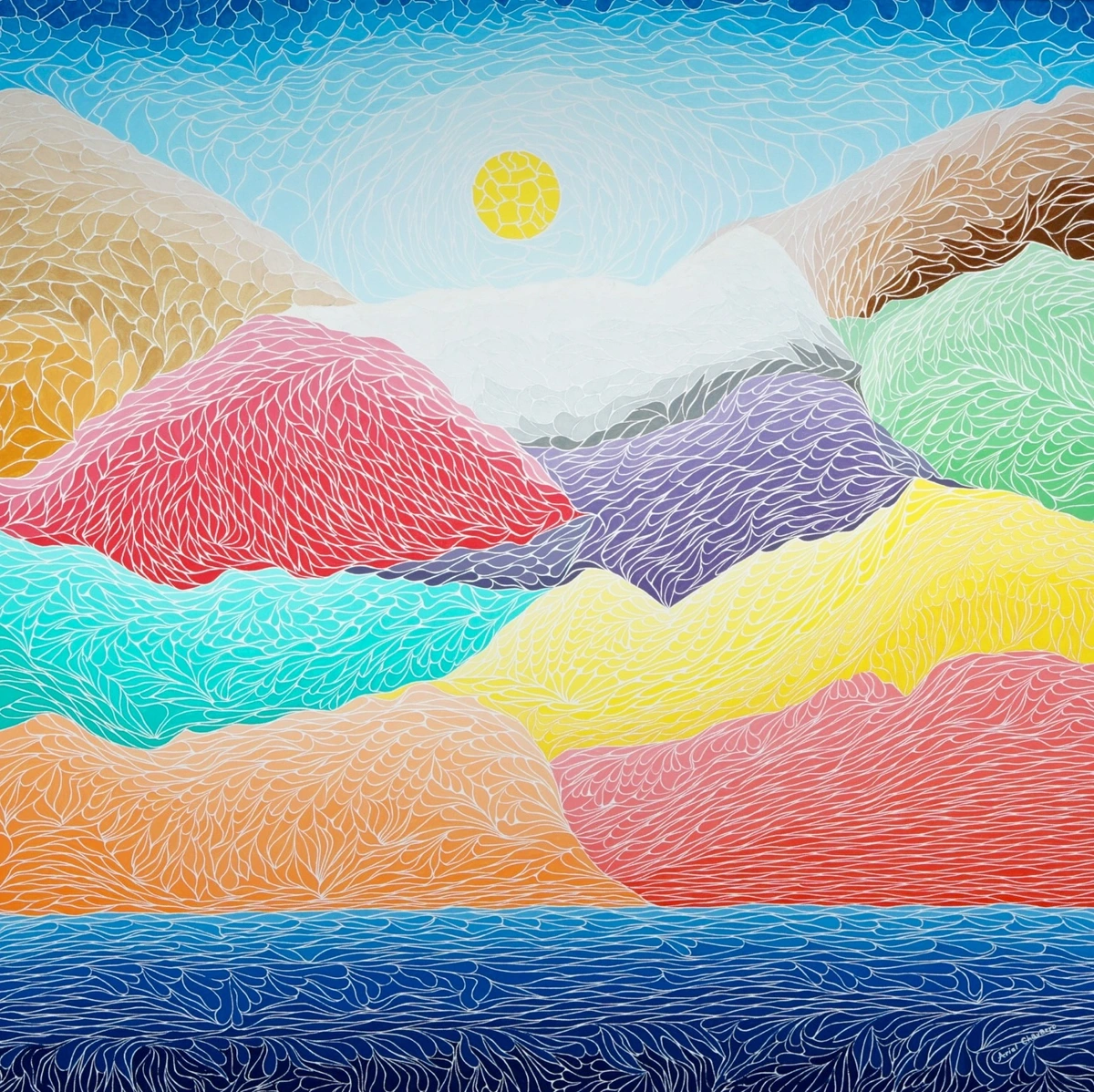
8. Art with Natural Materials (Grounding)
Step outside (or look around your home) and gather some natural materials – leaves, small stones, twigs, sand, dirt, flower petals. Arrange them on a piece of paper or a flat surface. You can glue them down, or just create a temporary arrangement. Focus on the textures, shapes, and colors of the natural world. This exercise is particularly good for grounding and connecting with the physical world.
Reflect on the connection to nature and how working with these materials feels. Does it feel grounding? Calming? Does it bring back memories? What do the textures and forms of the natural objects suggest to you? Just notice, without judgment. I find this exercise instantly pulls me out of my head and into the simple reality of the physical world.
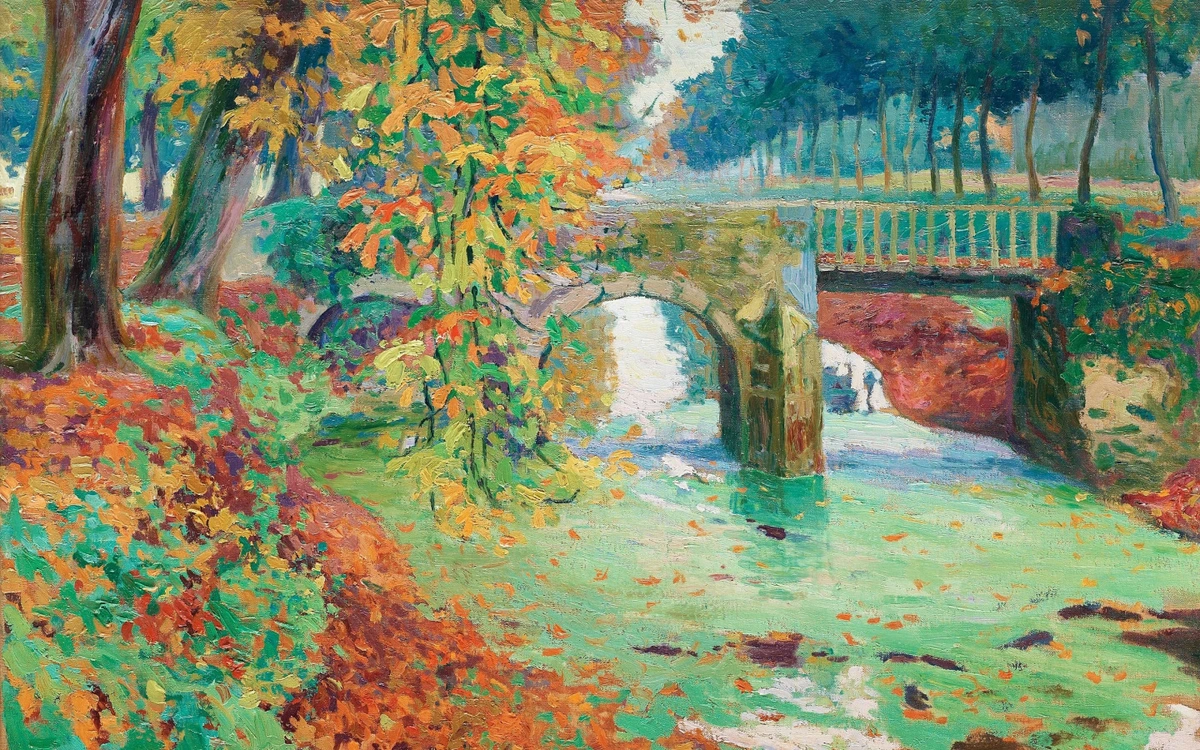
9. Blind Contour Drawing (Silence the Critic)
This exercise is fantastic for silencing the inner critic and focusing purely on observation and the physical act of drawing. Choose an object or even your own hand to draw. Place your pen or pencil on the paper and begin drawing the outline of the object without lifting your pen and, crucially, without looking at the paper. Your eyes should stay fixed on the contours of the object you are drawing. Let your hand follow your eye's movement, even if it feels awkward or the lines don't connect.
When you're done, look at the drawing. It will likely look distorted and strange, and that's the point! Reflect on the experience. How did it feel to draw without looking? Was it frustrating or freeing? What did you notice about the object by focusing so intently on its edges? Just notice, without judgment. This exercise is pure process.
10. Pattern Making for Focus (Mindful Repetition)
Creating repetitive patterns can be incredibly meditative and help quiet a busy mind. Grab a pen and paper. Start drawing simple, repetitive patterns. This could be lines, dots, circles, cross-hatching, or more complex geometric shapes repeated over and over. You can fill a page or just a small section. Focus on the rhythm of your hand and the appearance of the pattern as it grows.
This is similar to mindful mark-making but with a focus on structure and repetition. It can be particularly helpful when you need to focus or feel scattered. Reflect on how the repetitive action felt. Did your mind wander, or did you feel focused? What kind of pattern emerged? Did the process feel calming or perhaps tedious? Just notice, without judgment.
11. Visualizing Growth or Release (Gratitude Garden / Worry Tree) (Symbolic Processing)
Choose a feeling or concept you want to cultivate (like gratitude, hope, strength) or one you want to release (like worry, anger, sadness). Grab your materials.
- Gratitude Garden: Draw or collage a garden. For each thing you're grateful for, add a flower, a leaf, a stone, or a color. Watch your garden grow as you fill it with visual representations of gratitude.
- Worry Tree: Draw a tree. For each worry or negative feeling, draw a leaf, a branch, or a fruit representing it. Then, you can choose to leave them on the tree, or draw them falling off, or even tear them off the paper as a symbolic release.
Reflect on the process. How did it feel to give visual form to these abstract concepts? Did the act of adding to the garden feel expansive, or releasing from the tree feel lighter? Just notice, without judgment.
12. Sensory Exploration with Materials (Deep Grounding)
This exercise is purely about engaging your senses through the materials themselves. Gather a few different materials – maybe some soft fabric, rough sandpaper, smooth stones, dry leaves, wet clay, or even just different types of paper. Close your eyes and explore each material using your sense of touch. How does it feel? Is it rough, smooth, bumpy, soft, hard? What sounds does it make if you manipulate it? Does it have a smell?
Then, open your eyes and explore the visual aspects. What are the subtle variations in color or texture? How does the light hit it? You can draw or write about your sensory experience, or just sit with the feelings and sensations that arise. Reflect on which materials felt most interesting, calming, or perhaps challenging. How did focusing purely on sensory input feel? Just notice, without judgment. This is a great way to practice grounding.
13. Drawing Your Ideal Day (Positive Visualization)
Sometimes art as therapy isn't just about processing the hard stuff; it's also about cultivating the good. Grab your materials and draw or collage what your ideal day looks like. This isn't about being realistic, but about capturing the feeling of that day. What colors are present? What shapes? Are there people, places, activities? Let your imagination run free.
Reflect on what emerged. What elements were most prominent? What feelings did you experience while creating it? Does seeing it visually give you any insights into what brings you joy or peace? Just notice, without judgment.
14. Sculpting Your Inner Strength (Embodying Concepts)
Similar to sculpting stress, this exercise uses tactile materials to give form to positive concepts. Choose a material like clay or playdough. Close your eyes and think about what inner strength feels like to you. Is it solid? Flexible? Rooted? Light? Then, sculpt a shape that embodies that feeling. Don't worry about making it look like anything specific – it's about the physical act of shaping the material while holding the concept in mind.
Reflect on the process and the finished form. How did it feel to create something representing strength? How does the finished sculpture feel in your hands? Does it feel solid, resilient, or something else? Just notice, without judgment.
Integrating Art as Therapy into Your Routine
Making art a regular part of your self-care doesn't require hours. Even short bursts can be beneficial. Here are a few ideas:
- Schedule It: Put 15-30 minutes in your calendar a few times a week, just like any other appointment.
- Keep Supplies Handy: Have a small box or basket of basic materials easily accessible in your living room or on your desk so you can grab them whenever the mood strikes or you need a quick break. Leaving a small sketchbook and pen on your coffee table can be a great visual cue and invitation. Consider creating a dedicated "creativity corner" where your supplies are always ready to go, minimizing setup time.
- Combine with Other Habits: Doodle while on a phone call (if appropriate!), listen to music and draw in the evening, or do a quick color map before journaling.
- Start Small: Don't feel pressured to create something finished. A 5-minute scribble is a valid session.
- Be Flexible: Some days you might have more time and energy, others less. That's okay. The goal is consistency over intensity.
What to Do With the Art You Create?
So you've made some art. Now what? Remember, the value is in the process, but you might still wonder what to do with the physical result. Here are a few ideas:
- Keep a Visual Journal: Store your creations in a folder, sketchbook, or box. You can write the date and a brief note about how you were feeling or what you noticed during the exercise. Looking back later can offer insights into your emotional patterns over time. Consider taking photos of your art before storing or discarding it, creating a digital archive you can revisit easily.
- Revisit and Reflect: Pull out a piece you made previously. How does it feel to look at it now? Does it still evoke the same emotions? Do you see anything new in it? You could even reflect on it days or weeks later, allowing for distance. Sometimes a piece makes more sense in hindsight.
- Use as an Anchor: If you created a piece representing calm, strength, or a safe space, keep it somewhere visible. Looking at it can serve as a visual anchor to remind you of that feeling or intention when you need it.
- Ritual Release: For pieces created to process difficult emotions (like the mindless scribble or sculpted stress), you might choose to ritually destroy them. Tearing, shredding, or even safely burning (with caution!) the art can be a powerful way to symbolize releasing those feelings. This reinforces that the art served its purpose in the making, and you don't need to hold onto the physical manifestation of the emotion.
- Let it Be: You don't have to analyze or even look at the art again if you don't want to. Sometimes the act of creation is enough. You can simply put it away or discard it, knowing the process served its purpose. The bin is just as valid a destination as the wall.
- Display (If You Want!): If you happen to create something you enjoy looking at, feel free to display it! But remember, that's never the goal.
Overcoming Common Challenges
It's easy to feel intimidated or think you're "not good enough" when it comes to art. These feelings are totally normal, especially if you haven't created art since childhood. Here are some common challenges and how to navigate them:
- "I'm not creative / I have no artistic skill." This is the most common one! The beauty of art as therapy is that skill is irrelevant. There's no right or wrong way to do it. A scribble is just as valid as a detailed drawing. Focus on the feeling of making the mark, not what the mark looks like. Your inner world doesn't need to be aesthetically pleasing to be expressed. Seriously, my mindless scribbles look like a toddler had a tantrum, and that's exactly the point sometimes! Try the blind contour drawing – it forces you to let go of control.
- "My art looks ugly / I don't like what I made." Again, totally normal! We're so conditioned to judge art by its appearance. Try to shift your focus. Instead of asking "Is it good?" ask "How did it feel to make this?" or "What does this piece feel like?" The 'ugliness' might actually be a powerful expression of a difficult emotion. Embrace the mess; it's part of the process. Sometimes the most cathartic pieces are the ones you'd never frame.
- "I don't know what to do / My mind is blank." This is where the exercises come in! They provide a simple starting point. If you're still stuck, just pick a color and make a mark. Any mark. Then another. Or try the mindless scribble – it forces your hand to move even when your mind feels empty. Sometimes the act of starting unlocks something. Trust your intuition; let your hand move without conscious thought.
- "I feel silly doing this." Yep, been there! It can feel strange to sit and scribble or play with clay as an adult. Acknowledge the feeling, maybe even laugh about it. Remind yourself why you're doing it – for your well-being, for a moment of peace, for a different way to process. It's a form of self-care, and there's nothing silly about taking care of yourself.
- "I don't have enough time." Life is busy, I get it. But even 5-10 minutes can make a difference. Try a quick mindless scribble during a break, or just focus on mindful mark-making for the length of one song. Keep supplies easily accessible so you can grab them whenever you have a spare moment. Consistency, even in short bursts, is often more beneficial than infrequent long sessions.
- "It brought up difficult emotions." Sometimes, the act of creating can unexpectedly bring difficult feelings to the surface. This isn't a failure of the exercise; it's part of the processing. Acknowledge these feelings without judgment. It's also okay to feel vulnerable or exposed when you create, even if it's just for yourself. If these feelings feel overwhelming or persistent, remember that art as therapy is a tool for self-exploration, not a replacement for professional help. If you're struggling significantly, please consider seeking support from a mental health professional.
- "It didn't work / I don't feel better." Art as therapy isn't a magic cure, and one session might not solve everything. Sometimes the process itself is the benefit, even if you don't feel a dramatic shift immediately. Maybe you felt slightly more present, or you got a tiny bit of energy out. Be patient and gentle with yourself. Like any practice, the benefits often deepen over time and with consistency. And remember, this is art as therapy, not a replacement for professional help if you're struggling significantly.
- "I'm comparing my art to others." In the age of social media, it's easy to see what others are making and feel like yours doesn't measure up. But remember, this isn't about creating something for public consumption. It's a private conversation with yourself. Your art doesn't need to be 'good' by anyone else's standards. Gently remind yourself that this is your process, your expression, and comparison has no place here.
- "I'm easily distracted." Our minds wander, and external distractions are everywhere. Try setting a timer for even a short period (5-10 minutes) and commit to just being with the materials for that time. If your mind wanders, gently bring it back to the physical sensations of making art. Put your phone away! Create a dedicated space, even if it's just clearing a small corner.
- "I don't know how to interpret what I made." You don't have to interpret it! Sometimes the act of making is enough. If you want to explore it further, try using simple writing prompts like "What three words describe this piece?" or "What feeling is strongest here?" or "If this piece could speak, what would it say?" or "What energy does this piece hold?". Or just sit with it and notice any thoughts or feelings that arise, without needing a definitive answer. The meaning is entirely personal and can change over time.
A Final Thought
Using art as a tool for self-care is a deeply personal journey. There are no grades, no critics (unless you invite your cat to judge, which mine does), and no pressure. It's just you, some simple materials, and your inner world. Give yourself permission to play, to be messy, and to explore whatever needs expressing. You might be surprised at what you discover.
If you're interested in exploring art further, perhaps even collecting pieces that resonate with you, feel free to browse my shop or learn more about my artist's journey. You could even visit my museum in 's-Hertogenbosch sometime! But for now, grab those crayons and see what happens.




